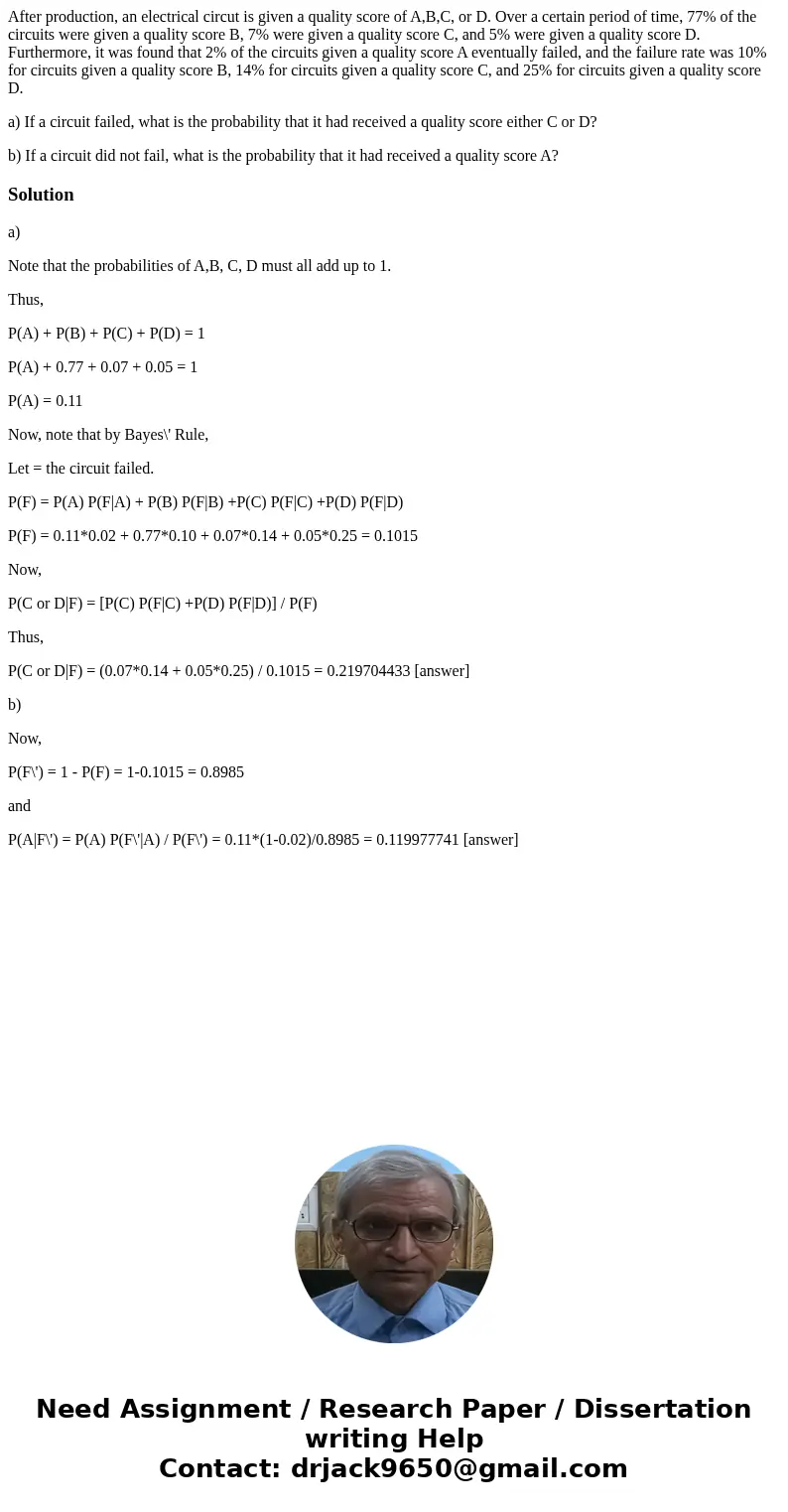After production an electrical circut is given a quality sco
After production, an electrical circut is given a quality score of A,B,C, or D. Over a certain period of time, 77% of the circuits were given a quality score B, 7% were given a quality score C, and 5% were given a quality score D. Furthermore, it was found that 2% of the circuits given a quality score A eventually failed, and the failure rate was 10% for circuits given a quality score B, 14% for circuits given a quality score C, and 25% for circuits given a quality score D.
a) If a circuit failed, what is the probability that it had received a quality score either C or D?
b) If a circuit did not fail, what is the probability that it had received a quality score A?
Solution
a)
Note that the probabilities of A,B, C, D must all add up to 1.
Thus,
P(A) + P(B) + P(C) + P(D) = 1
P(A) + 0.77 + 0.07 + 0.05 = 1
P(A) = 0.11
Now, note that by Bayes\' Rule,
Let = the circuit failed.
P(F) = P(A) P(F|A) + P(B) P(F|B) +P(C) P(F|C) +P(D) P(F|D)
P(F) = 0.11*0.02 + 0.77*0.10 + 0.07*0.14 + 0.05*0.25 = 0.1015
Now,
P(C or D|F) = [P(C) P(F|C) +P(D) P(F|D)] / P(F)
Thus,
P(C or D|F) = (0.07*0.14 + 0.05*0.25) / 0.1015 = 0.219704433 [answer]
b)
Now,
P(F\') = 1 - P(F) = 1-0.1015 = 0.8985
and
P(A|F\') = P(A) P(F\'|A) / P(F\') = 0.11*(1-0.02)/0.8985 = 0.119977741 [answer]

 Homework Sourse
Homework Sourse